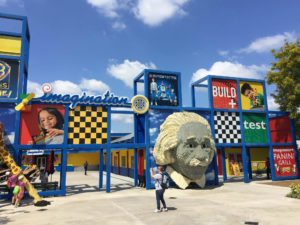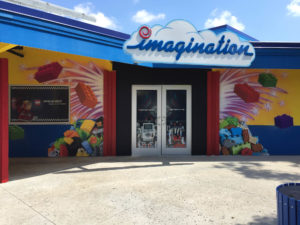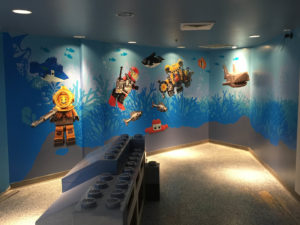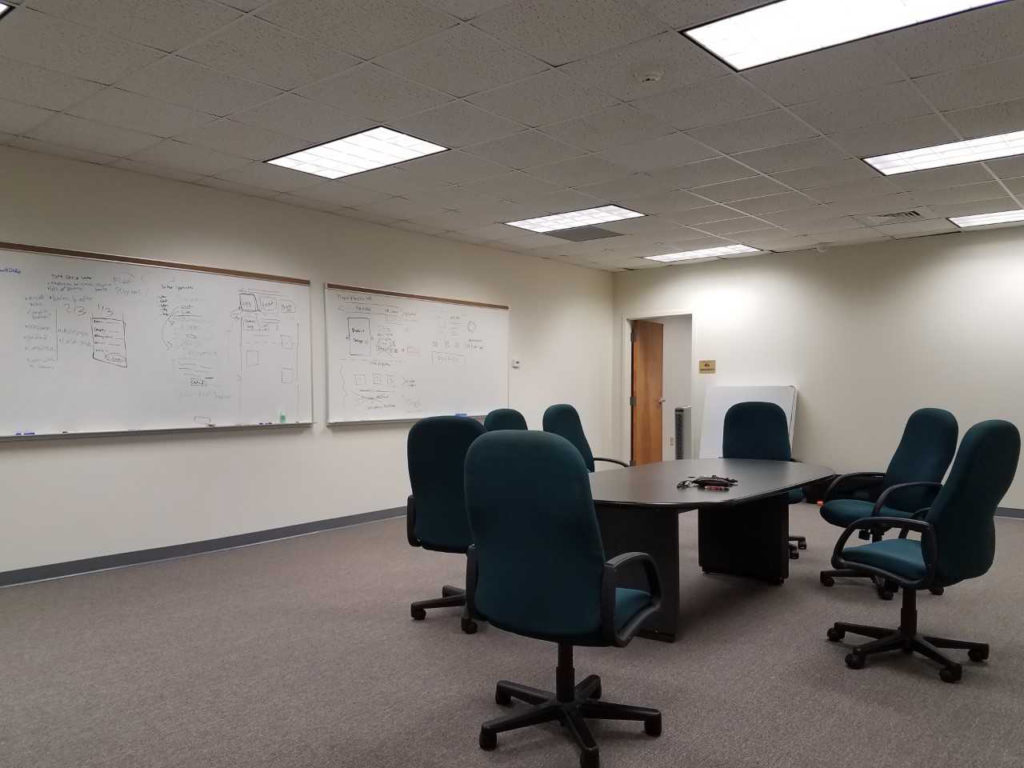
5 Reasons Why Your Business Needs Branded Space
By Nicole Tropea & Spencer Tanase
So, why does your business need branded space?
First and foremost, branded spaces are really awesome. But, perhaps more importantly, having branded spaces will make you more money.
You may have heard phrases such as branded space, branded environment, environmental design, custom designed retail space, or any other synonym in passing somewhere. Or maybe you haven’t heard any of these terms before.
Regardless of the vocabulary, you probably already know what a branded space is because you’ve almost certainly been in one before. Broadly speaking, it’s a space wherein most or all surfaces are curated or designed thoughtfully to communicate a brand message. That message can be as simple as “this company is young and hip” or as complex as “you are a part of something great and anything is possible while you’re here”.
That being said, there isn’t really a single, unified term yet for what a “branded space” is because there aren’t a lot of people talking about it. And that’s a shame, because it’s so cool. But we’re not going to let this stand any longer. We’re going to take up arms and dive right into branded space in great detail with you right now.

In this post, we’ll discuss why branded space is not only a worthwhile investment, it’s the logical next step for your business. We’ll also go over what you can expect from the whole process and how you can do it well. So, before we get into all that, let’s briefly review what we mean when we say “branded space”:
What is a branded space, exactly?
Now that we’ve had a lot of terms thrown around, it’s time for a specific definition.
Essentially, branding a space refers to the process of applying brand equity to 3-dimensional environments. Every location, physical or digital, where consumers interact with your brand is an opportunity to present your unique message to them. This includes the exterior of your office building, the interior offices, your website, and your trade show or exhibition booth.
With or without realizing it, anyone who has been to a shopping mall or theme park already has firsthand experience with branded environments. These are places where all things you see – wall coverings, merchandise displays, and even price tags – are carefully designed to be absolutely synchronized with the brand’s overall image through digital printing.
Here’s an additional description from Wikipedia: “In architecture and interior design, branded environments extend the experience of an organization’s brand, or distinguishing characteristics as expressed in names, symbols and designs, to the design of interior or exterior physical settings. It uses space as a physical embodiment of the brand to create a ‘brand space’ . This is achieved through ‘architecture, interiors, lighting, graphics, landscape’ in spaces such as retail stores, showrooms, trade-fair booths and office environments.”
By now we should all be on the same page regarding what branded space is.
It’s time to see why you need to consider it (and how it will make you more money):
1. You're missing out on tons of high quality impressions
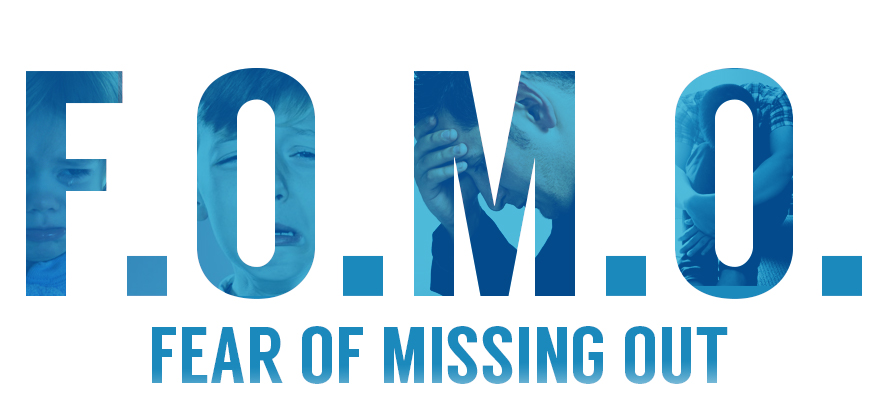
Your business may already be utilizing wayfinding or other kinds of free-standing signs to attract foot traffic, and that’s a great start. But the unfortunate truth is that those are momentary tools and aren’t going to leave a lasting impression on their own.
Why stop at just signs? There are myriad ways to turn your branded space into a showcase highlighting new products, or even a self-demonstrating experience embodying your company’s purpose or message.
For example, let’s imagine you own some kind of marketing company. As a marketing company, you’re presumed to understand the fundamentals of good, consistent branding.
But, when you invite a prospective client into your office, all they see are boring off-white walls, faded motivational posters, and ugly filing cabinets. That doesn’t look like fundamentally good branding.
Perhaps you’ve even considered that your office might leave a bad impression. Perhaps you choose to meet at Panera or Starbucks instead. In this instance, you had no opportunity to allow branded space to make an impact on your customer and you made do with what you had – by escaping to a different company’s branded space.
Lasting impressions are all about “show don’t tell.” Rather than infographics, popups and fancy visuals that tell people what your brand is about, show them by presenting them with a meaningful experience.
Focus on what your brand stands for. Show its purpose, free of flashy gimmicks. Nothing can subtly convey the unique message of your brand like the feeling of “being” in your unique space. This point bleeds into the next one, which is:
2. It's an opportunity for proactive, memorable customer interaction
Just to clarify: waltzing through a giant, overt advertisement doesn’t increase one’s appreciation of a brand. Nuanced appeals to emotion do.
When it comes to branding, finesse and subtlety typically play just as much of a role as advertising, and will be far more effective psychologically than name recognition alone.
Haphazardly putting up a bunch of posters of your logo is equivalent to slapping your audience in the face with your brand (of course, if that’s the message you’re going for, more power to you). It’s just not a long term solution. There’s something to be said for capturing the spirit and “feel” of a brand rather than just labeling everything.
Just like a great work of art, you want your branding to evoke a particular emotional response in your customers. The best way to do that is addressing a core human need, like community or fulfillment. To do this authentically, you’ll need to create an environment that signals “this is a special place” and “you want to be a part of this”.
For that, you need much more than your best sales pitch, four white walls, and generic office furniture, however sleek it all may be.
You need to make the customer feel good and you can achieve that through large format printing and vinyl wraps.
Moreover, branded spaces can be used to create a coherent brand experience across multiple interactions and locations. We recommend creating a brand style guide and applying it to all of your advertising, online presence, and branded spaces. If you do it well, customers will recognize what’s yours when they see it, even if it’s out of context. With enough exposure, they’ll even be subconsciously reminded of you any time they see something similar.
Of course, while a branded space proactively makes a positive impression on the customer, the opposite is also true. For example, if you have a small business that doesn’t get a lot of customers, you may feel like you don’t need to invest in branded space.
Unfortunately, potential new customers will see that lack of investment reflected in your space and think “This place must not get a lot of customers. Maybe there’s a reason why nobody wants to do business with them.” Not really the impression you want to give, is it?
By ignoring opportunities to brand your space, you make your business look like it doesn’t care about customer experience.
3. It boosts employee morale
Something important to note here is that colors and logos may look nice, but that’s about all they do. They don’t have any inherent property that will get employees excited about your workplace and office culture (unless maybe you are a logo design company).
Creating an environment that goes beyond simple branding to make employees feel great about the company does more than just boost morale. It’s a great internal method for reinforcing the external brand message via the organization’s best ambassadors: the workers themselves.
Successful brands know who their target audience is. Branded space works wonders by inspiring positive emotions to this target audience. The cool part about branding your space is that the target audience can include your own workforce.
With the proper environment, you can inspire your employees and make them feel proud to work for you. They’ll be more loyal for it, and they’ll remember that empowered feeling when they encounter someone outside work who may be a customer for your business.
As it turns out, only half of workplaces have brand expression that is designed to encourage behavior consistent with the brand. This is a problem, because those companies that don’t have good workplace brand expression aren’t only missing out on the benefits they could be getting with current employees. They’re also missing out on hiring more high-quality employees by making the wrong impression on applicants.
Case and point: If you had a job interview in each of the conference rooms below, which company would YOU most likely choose to work for?
If it seems obvious, that’s because it is. Honestly, after spending 30 minutes in the first room, would you even remember why you were there?
Inspirational and engaging space is bound to have a better impact than a blank wall.
But to understand just how big that impact may be, try to imagine yourself at a themed shopping area such as Disney Springs. This is the epitome of a branded environment. Here, everyone is primed to spend money. There are no rides, but there are plenty of stores, restaurants, and expensive experiences. People willingly part with their cash because they feel the magic of a theme park even though they aren’t in one. Every aspect of the surroundings reflects that magic and reinforces the spending mood.
Of course, your environment doesn’t have to exude “spend money”. It could be any message, like “this organization does great things” or “you are important”. All it needs to do is create some sort of “magic”.
If you’re wondering how you’re ever going to compete, you can always work with a company that has theme park experience like us.
4. It's cost effective
First off, let’s debunk some things you may have heard or assumed.
There’s a common misconception that branded spaces are extremely expensive. A branded space doesn’t have to be a massive scale $50,000 endeavor. You can do a lot with a little (some stylish signs here, a wall wrap there) if your budget necessitates that. The end results depend less on how much money you throw at the project and more on how carefully planned the elements are. A good visual products company should include a detailed in-person consultation followed by digital renderings for every branded environment they work on.
Another misconception is that advertising statistics are accurate. Many reports on advertising value are not really as statistically accurate or significant as they claim to be. The truth is, ROI and brand equity are inherently and notoriously difficult to quantify for many types of advertising. We’re not going to go down that rabbit hole right now, but with a little research, one can come to this conclusion fairly easily.

Ok, now it’s time to get down to the nitty-gritty details:
You really have to look at the ROI of branded spaces in terms of the amount of effort required as compared to the potential risk of not making the effort. Think of branding your space as getting dressed for an important meeting:
Is wearing a nice suit to a meeting going to make or break a deal on its own? Do we know the exact measure of how much it helps in any given interaction?
It may be possible to quantify it if you do a double blind experiment, but really it’s just common sense that you’re likely to lose out on sales if you’re not properly dressed.
Moreover, it’s nearsighted to try to quantify the results of branding based solely on individual sales, as many managers try to do. You have to look at the entire lifetime value of each customer based on the interaction that they had with your brand. How memorable was it? Have they become biased towards your brand as a result?
It’s challenging conversing with brand managers and CFOs about spending money on displays because they want to know exactly how many more sales it will make for them. While it isn’t an exact science, there are a few things that branding an environment will undeniably do:
- Increase dwell time – people stop to look around at interesting visuals
- Increase brand engagement – think: a grocery store putting eggs, butter, and milk in the back is the same as making your client walk through your whole branded office to get to the meeting room
- Help build brand identity – no one can identify with your brand if it has no identity!
- Facilitate the experience by directing customers to what they want or need – people will buy more if you make buying easier
- Keep your brand looking up-to-date and stylish – regardless of products sold, a store that looks out-of-date will not be perceived as a top brand.
The best way to keep your branding cost-effective is to use all of your space effectively, since you’re already paying for that square footage (speaking of using space you already own, have you ever wondered how many impressions a vehicle wrap gets? It’s tens of thousands). This doesn’t mean you have to cram a ton of branding in wherever it will fit, just that you should consider how every area can be utilized and design each area thoughtfully rather than simply ignoring it.
Much like separate advertisements can have different target audiences, different areas of branded spaces can have slightly different goals and moods. A branded space may seem like a daunting total redesign, but a well thought out one can usually achieve an entirely new look with just a few key elements.
5. It's the future

Many high-value companies are already experimenting with new technologies to take their branded environments to the next level: grabbing the customer by all 5 senses.
You don’t need to go beyond visual to start noticing the effects for your brand, but it’s worth noting how deeply aware successful brands are of the image they’re projecting (that is, aware enough to pump attractive smells into stores and showrooms to reach straight into the customer’s subconscious mind.) With branding technology advancing so quickly, why be left in the dust with no branding at all?
The truth is, customers have come to expect some sort of branded environment in any setting they encounter. It’s no longer enough just to make sure that your products are arranged neatly on the shelves and your floors are clean. People (especially young influencers) want experiences that aren’t just good, but shareable. And shareable means photogenic, up-to-date, and immersive.
If the elements of your environment don’t fit into a consistent theme, visitors will sense that something is off. Without a certain sleek veneer that branding your environment delivers, potential customers will either (at best) come in once and then forget you exist or (at worst) not come in at all.
To make sure you stick in the memories of your customers, your brand has to exude value and affirm that you’re “the real deal”. The implicit value and “special feel” of your brand will make people want to be a part of what you’re doing, motivating them to spend money with you and share their experience with others.
Conclusion

We know, we know, this is a lot of information to take in. The good news is that any branded environment provider worth your business will already know all of this information and be able to parse it for you.
The company you choose to do your branded environment needs to meet and discuss with your existing team to find the best solution for you given your budget and goals.
Since the goal is to increase brand equity and achieve uplift, you need to ensure the company has expertise in this. It’s not enough that they know how to install a vinyl wrap. They have to design everything with the goals and budget of you, the client, in mind.
If it’s done right, the whole will ultimately be greater than the sum of its parts. You’ll end up with more than just a new interior design. You’ll have a true brand experience beyond anything you’d ever imagined; one that reflects your style, values, and aspirations. And trust us: your customers and employees will thank you.


